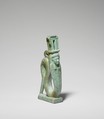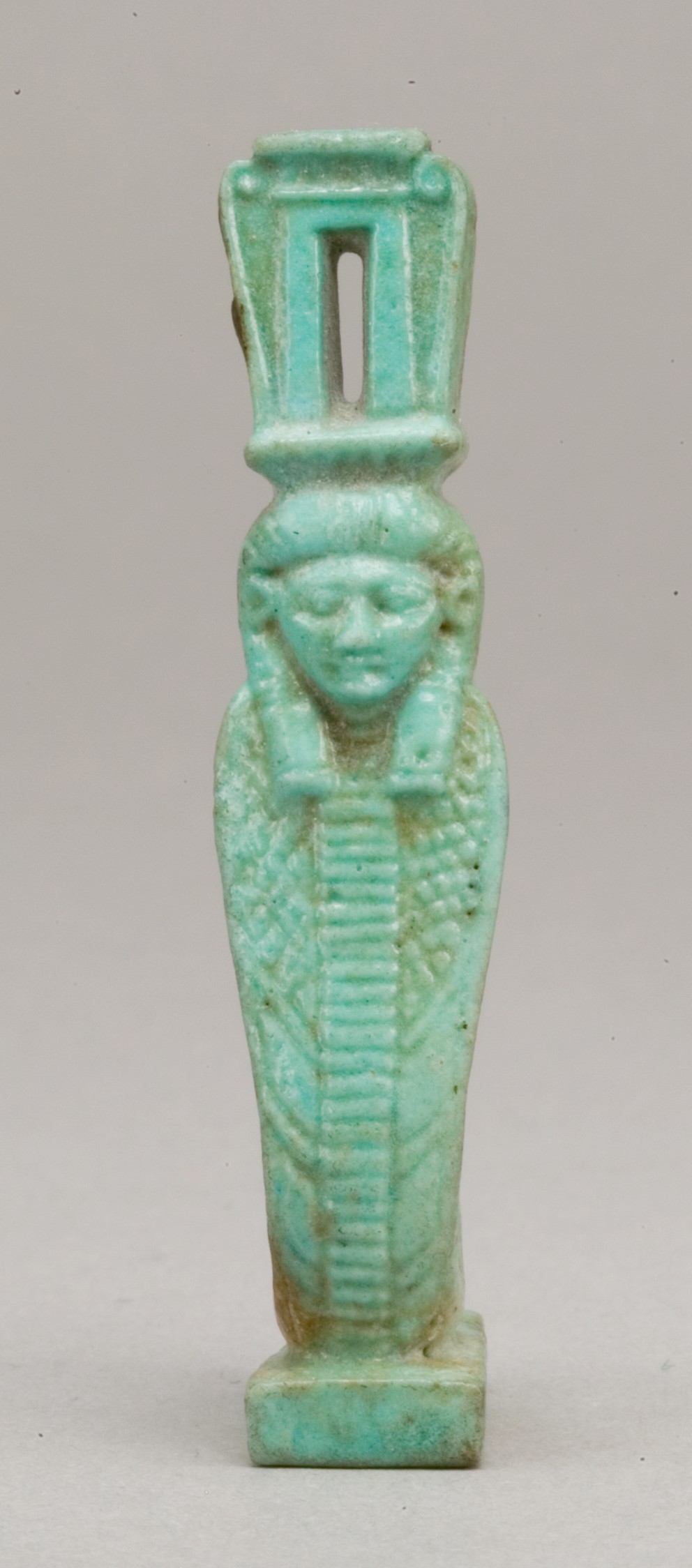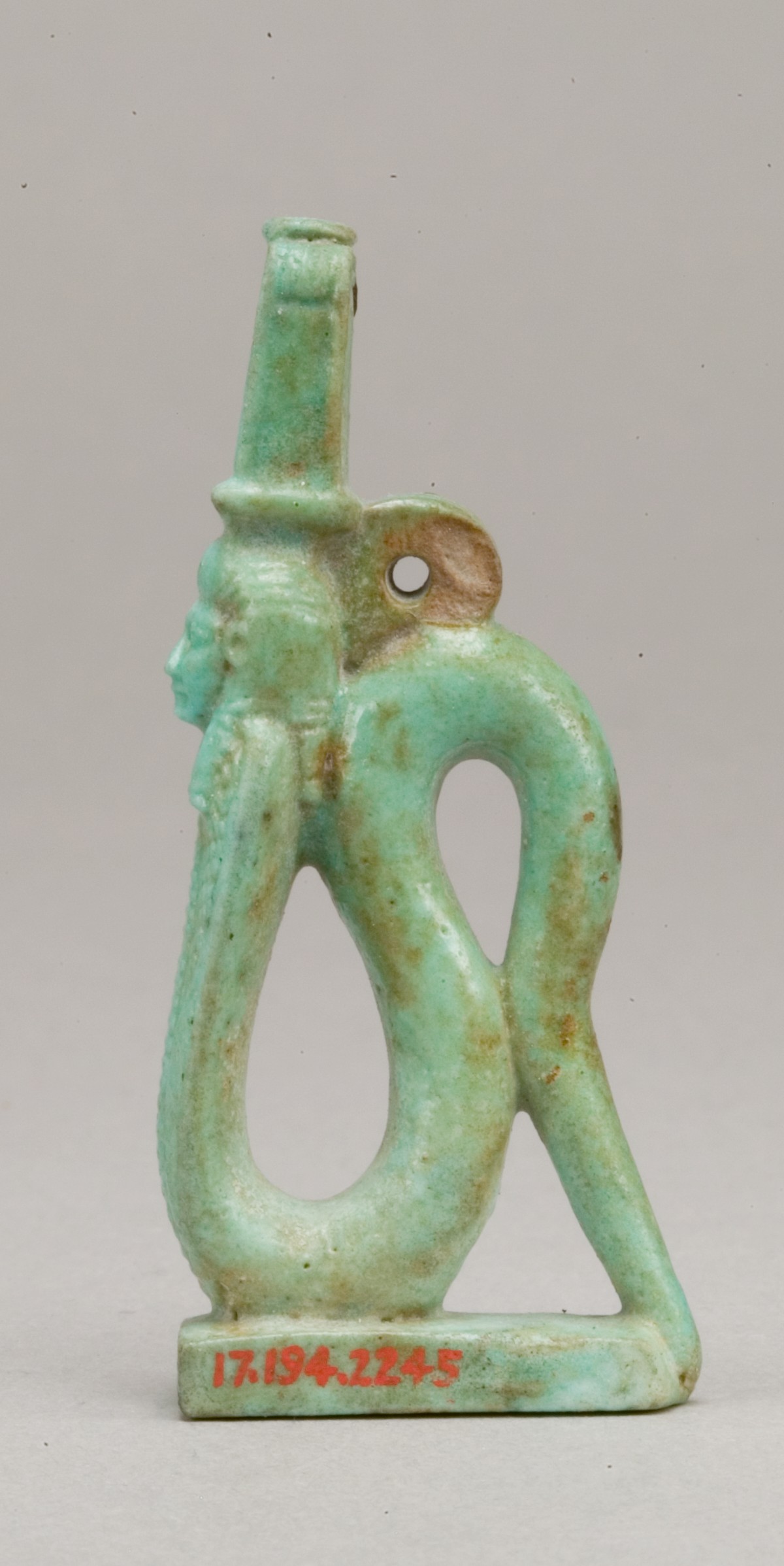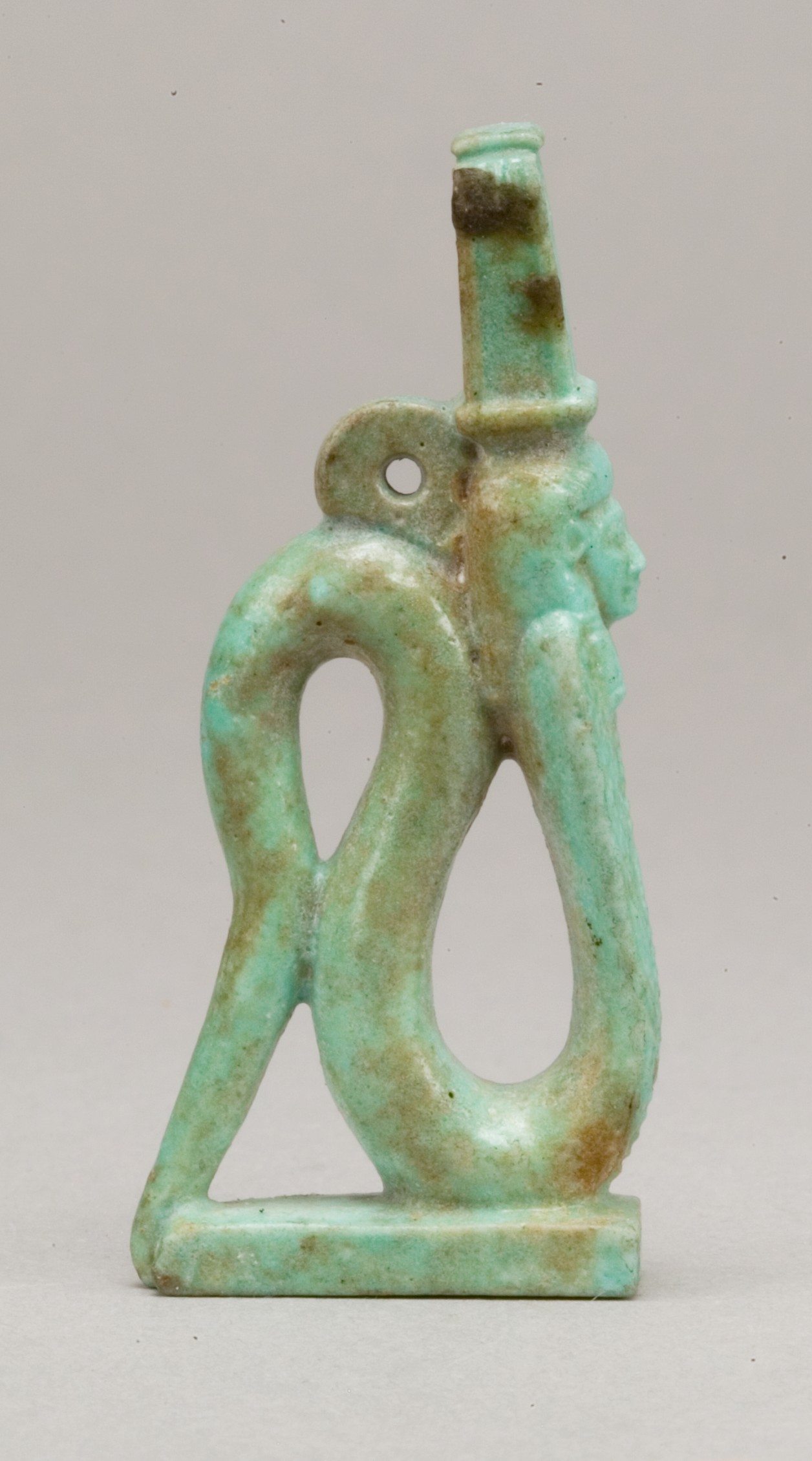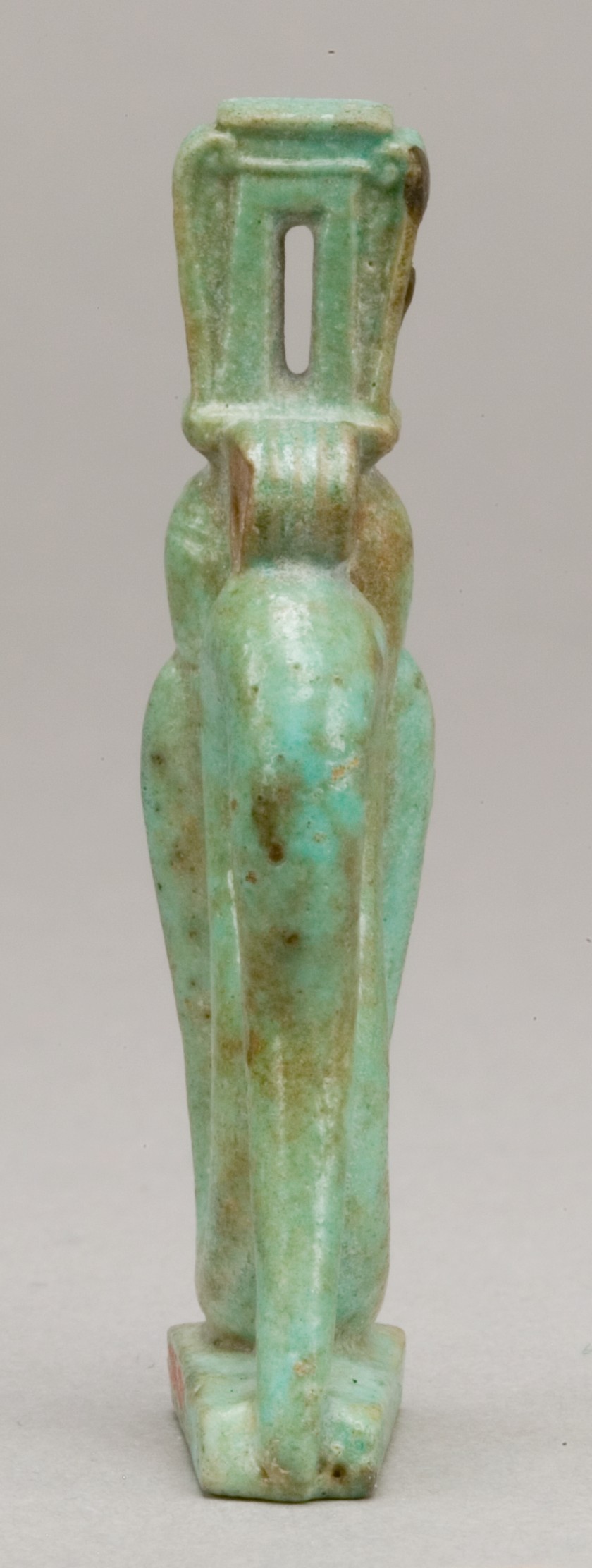Hathor Amulet
Third Intermediate Period–Late Period
In Ancient Egypt, deities are often depicted with a human body and an animal head. Less frequently, a human head was attached to the body of an animal, in this case a cobra. The snake is shown rearing on a low base; its weight is placed on the first, bottom segment of the body and on the tip of the tail, which protrudes slightly over the back of the base. Its body is only bent twice, so that the cobra rears up high. In the center of the snake’s wide hood is a vertical column of ventral plates. A crisscross pattern marks the upper part of the hood, with three diagonal ventral scales framing the lower part of the vertical column. Emerging from the hood is a human head wearing a long, tripartite wig bound with ribbons. The ears are very narrow where they meet the face and then widen, as is typical for cow’s ears. The sound box of a sistrum (a cultic musical instrument) on top of the head takes the shape of a small shrine framed by inward curving volutes. Behind the back of the head is a pierced loop for suspension. For an identification of the deity represented here, please see the curatorial interpretation below.
This image cannot be enlarged, viewed at full screen, or downloaded.
This artwork is meant to be viewed from right to left. Scroll left to view more.
